On this very day, 23 years ago, Dave Chambers and I set off into the early morning sunshine in a battered Belgian VW Golf, towing a tiny boat called Merlin. We were heading for Brittany, where we planned to spend the next month based in the Port Rhu Maritime Museum, Douarnenez, from where we would explore the Breton coastline – a coastline with a deservedly fearsome reputation. One flaw in this plan was that we had omitted to inform the Port Rhu Museum of our plan…
Dave intended to live on this boat with me for two weeks, then would head off to explore the Breton countryside for two weeks while Ceci came to to join me for a further two weeks on Merlin. Dave therefore had his own set of adventures in the argoat of Brittany…
You can now read about our collective adventures in an Amazon Kindle e-book. A further version should be available through the Apple iStore for use on iPads shortly, while paperback and hardback versions (with illustrations!) will be available through Blurb Publishing (and probably through Amazon) within a month or so.
It was a magical four weeks. I hope that you enjoy them as much as we did:

Author: Richard Lindsay
Caithness wildlife : May 2016
Two-day workshop based at the Environmental Research Institute (ERI) in Thurso, Caithness, and organised by the University of Nottingham to talk about remote sensing and peatland mapping. The early mornings and evenings offered the opportunity for wildlife watching.
To start with, the centre of Thurso was ringing with the calls of rooks nesting in the trees of St John’s Square. The young are already pretty much teenagers and are as hungry as wolves (click on photos for full view):


It’s extraordinary to see the bulging chin pouch of the parent just completely empty after feeding the young:


Afterwards the youngsters sit waiting for yet more. I was intrigued to find out where the food was coming from, and noticed that the parents kept flying north, to the coast:

I found all the rooks strutting round the beach along with several jackdaws, turning over seaweed for sandhoppers and things:

The kelp beds themselves provided some lovely shapes and colours – aided here by Photoshop:


Flitting about amidst the kelp was a redshank – and I suspect various turnstones but their camouflage is so good I just couldn’t spot them:

The oystercatchers, on the other hand, were hard to miss with their constant piping, flashy black and white wing bars and brilliant orange-red legs and bills. Very entertaining to watch them doing a sort of hokey-kokey walk from time to time:


Out on the peatlands, the skies were a gorgeous blue with not a trace of the rain which helps to create these peat bogs. All rather fortunate for the workshop!

After a day spent out on the bogs, we were taken to a secret spot on the coast in hope of seeing puffins. There was one, but with my camera it was a tiny white dot. The scenery was, however, quite stunning:

The fulmars were wheeling about on their stiff wings above the crashing waves and along the cliff faces:


At the end of the second day we had the opportunity to visit the REAL northernmost point of mainland Britain – Dunnet Head – which lies just a few miles west of John o’Groats:

The cliffs around Dunnet Head are breeding grounds for a great many sea and coastal birds – but of course everyone wanted to see puffins. While everyone else went puffin hunting, I headed off to find ravens, which also nest on the cliffs:


Having been disturbed by a band of puffin hunters, the raven then flew round and practically right past me – too close for the camera to cope with zooming and focusing! Managed to catch a good view of the huge beak, though:


Joining the puffin hunters, there was much excitement about a couple of puffins on a ledge – but closer inspection revealed the nearer bird to be a razorbill:

Then a very obliging puffin came waddling out from its burrow to stand there displaying its essential puffin-ness:

Meanwhile the fulmars continued to wheel around along the cliff edge and I continued to take many photographs of empty sea with just the hint of a fulmar tail at the edge of the photograph. If you take enough photos, at least one will work just by sheer luck:

From the high point of the headland we could see all the way back into Caithness, bathed in the evening light. In the middle distance the regular lines within the brown of the peat bog indicate where domestic peat has been cut in the past:

Driving back down from the headland, my PhD student, Jerushah, and I stopped to capture the yellow of the gorse, plus a little male stonechat:

Then in the meadows in Dunnet itself we spotted this curlew, feeding hungrily while its mate flew overhead calling with that liquid whistling call that marks the edge of the peat bogs and the start of the in-by land:

Photos from the 16 hour journey home will follow soon.
What the Commuter Saw : The Flow Country
I’ve been to a workshop, then doing fieldwork, up in the Flow Country for the past week. I’ll explore what we did in a later post. For the moment I’m just going to post images grabbed during the 16-hour train journey from Colchester to Thurso, a journey that began at dawn in Colchester but as night fell I was still an hour away from Thurso, so the last part of the journey (through the Flow Country) was completed in darkness, alas.
The route was Colchester, Peterborough via Ipswich, Edinburgh, Inverness, Thurso. Interesting to see oil-seed rape (colourful, but depressing in terms of biodiversity) all the way from Colchester right up into Sutherland (as always, click on image to see full view; browser back-arrow to close image):
Journey began through the mists of the North Essex and Suffolk coast at Manningtree, heading towards Ipswich:


After Ipswich the train headed off westwards across country towards Peterborough, and, although there’s the odd oil-seed rape field, it’s clear that there’s been much ploughing in recent weeks:






By the time we’d arrived at Peterborough to join the Virgin East Coast Line, the sun was well up, and the journey northwards as far as Newcastle was a patchwork of green fields with (possibly) winter wheat alternating with the blazing yellow of oil-seed rape fields:



The sky hazed over after Newcastle and created some rather interesting spectral landscapes:



Then, at Edinburgh, the train to Inverness was just about to leave when a crowd of young lads piled on staggering under the weight of multi-pack lager boxes, so I spent the whole journey to Inverness wedged against the door being blasted by music from their portable speaker/iPhone combo. Several passengers complained but it made not a bit of difference. Consequently I only managed one half-decent photo and missed the various views that I’d been planning to catch. Rather frustrating, but at least I managed one over towards the Cairngorms near Loch Insh:


Dusk was approaching as we left Inverness, and by the time we’d passed Invergordon there were various interesting skies developing, including some rather fine altocumulus lenticularis clouds formed over the distant hills:




Crossing the Kyle of Sutherland (which flows out into the Dornoch Firth) just before Invershin, the light seemed to increase slightly:

Then the cloud thickened and the last of the light faded as we went past the 100-foot high statue of the much-reviled Duke of Sutherland (due to his role in the Highland Clearances – his reasons are open to debate but the effects of his actions are not), perched on Ben Bhraggie overlooking Golspie:

Myland wildlife, Colchester : 5th May 2016
A largely botanical day today between home and Colchester North Station, but started with the mallards still occupying a front lawn a very long way indeed from the nearest water. How she will get her ducklings down the hill to the River Colne, I just can’t imagine, even with the assistance of her two male companions. I can see duckling chaos ahead… (as usual, click on image for full view and browser back arrow to close image):

The greater stitchwort (Stellaria holostea) has been forming white drifts in the shade of woodland margins for a couple of weeks now:

The meadow buttercups (Ranunculus acris) are now tall and in full flower:

A magpie, looking as though it has come off second-best in a fight with a crow or a pair of jays, was skipping through the daisies:

Growing out from the base of someone’s wall, the amazingly hardy herb robert (Geranium robertianum) manages to flourish where almost nothing else can grow – it forms deep crimson patches in the loose dry ballast between the railway tracks at Colchester and Stratford Stations:

On the grass verge leading up the Colchester North Station, the common field speedwell (Veronica persica) now forms bright blue buttons of colour amidst the grass sward:

What the Commuter Saw : 3rd & 4th May 2016
A mixed bag of things from yesterday and today. Emerging from the house this morning, I was confronted with a pretty wild sky – cirrus going through the spin cycle
(As ever, click on image to see full size, then browser back arrow to close):

Yesterday, the sky began with fair-weather cumulus on the Abellio Greater Anglia train journey from Colchester to Stratford, as here, over New Hall School just to the east of Chelmsford:

…but things clouded over towards evening, so as I was waiting at Galleon’s Reach DLR station, things were rather grey, but then the male kestrel turned up – and a close examination of the photo suggests that it has a wire or something tangled round its leg (I don’t think this is a falconry jesse from an escaped bird) – so, animal welfare concerns!

Today, despite the wild morning sky, things remained blue and calm all day, so the views from the train of the Marks Tey oil-seed rape fields, the oak tree pair just after Hatfield Peverel, the view up to Galleywood and the oil-seed rape field looking towards Billaricay, all looked full of the joys of summer. Even the wind from the train window wasn’t too chilly today:




Once on the DLR from Stratford, the bright sunlight lit up the DLR carriages in the glass walls of the Newham Council offices beside the Royal Albert Dock (with a little bit of help from Photoshop):

Then the large mirror on the platform end at Galleon’s Reach DLR gave lovely swirly images without any help from Photoshop:


Standing waiting on Platform 10 of Stratford Station for the train to Colchester, a goldfinch was twittering and warbling for all it was worth while perched on the overhead lives above the commuters, giving them all a subliminal sense of pleasure, I suspect (in Japanese metro stations they play birdsong), but not one of them looked up at the bird just above them:


Just a sunset over the oil-seed rape fields at Marks Tey to finish – again, rather a wild cirrus sky but this time streaky rather than swirly:

Essex wildlife : 1st May 2016
Bank Holiday weekend, so visited Munnings Art Museum and Garden Cafe in Dedham, mainly for the Cafe and the Gardens, as we’ve visited the Art Museum before (all are very good and well worth a visit).
Settled onto an outside table at the cafe, daughter was most excited about seeing the ponies again:

Entertained for a while by jackdaws picking up horse-hair for nest-lining:

Then a buzzard flew over but I was too engrossed in stealing some of my daughter’s cream tea to catch even a half-decent photo.
Finally a mistle thrush started quartering the field, stopping, listening, digging, and generally collecting a goodly supply of worms for its nestlings:





A wood pigeon feather caught my eye as we wandered round the gardens near the amazing lime tree:

Then later, while driving over to SeaPets to buy Daphnia for our goldfish – Michael (Fish) and Sam – I spotted this distant anvil which was probably dumping rain on far-away Braintree, but it just sort of smeared and dissipated:


The waste ground where I pulled over had a few nice things too – pale version of red campion, and bluebell (the bluebells are currently creating a gorgeous blue mist over the floor of High Woods, Colchester, the woods on the train line as it runs just to the west of Colchester, and the woods just to the east of Shenfield:


Spring…!!!
Essex landscapes and wildlife, Myland, Colchester : 30th April 2016
Working much of the day so I largely missed some ‘crazy skies’ – according to my daughter. A brief trip out towards the end of the day caught the tail end of these huge cumulus congestus and cumulonimbus calvus, although by then they had largely drifted off to Brightlingsea and the coast (as usual, click on images to see full size, then browser back arrow to return to blog).
The last of the cumuloninbus drifting eastwards towards Brightlingsea from Myland:

The tree-top gives a sense of scale to these massive clouds:

A gull rather than a plane this time (see previous blog 26th April 2016):

A hedge sparrow, or dunnock, instead of being its normally shy and secretive self, was pretending to be a robin by singing lustily from the top of a cherry tree – producing a rather Japanese effect:

Heading off the the fields as the sun finally disappeared below the horizon, there weren’t enough clouds to create a golden sunset, but there was still enough to give some interest to the sky:

Coming across a dandelion seed-head it seemed worthwhile trying a few close-up shots together with the sunset:


Final view of sunset before heading home:

What the Commuter Saw : 28th April 2016
Another busy day, starting with a big surprise (as usual, click on blog images for full view – and on a computer it is worth looking at the larger views, use browser back arrow to leave image). Walking down to Colchester Station from Myland I pass a set of large bushes and small trees which are always bursting with the sound of sparrows, though the bushes are so dense that only the occasional sparrow is visible. Today it was silent. Very strange.
Then as I walked past, this bird that definitely wasn’t a wood pigeon burst from the bushes over the nearby rooftops. By the time I’d grabbed the camera it was soaring above me, rapidly gaining height – a sparrow hawk:
No wonder the sparrows were silent. One of them had probably been providing breakfast, so to speak.
Having put the camera away because I was nearing the busy station, I suddenly found myself surrounded by another blizzard of goldfinches (see previous post 26 April). They were scrambling all over a horse chestnut tree:

…digging into the large knot-holes – for insect grubs, I suppose (unless they were seeking tree sap):

The grassy bank on the approach to the station was covered with the tiny purple flowers of common storks bill (Erodium cicutarium):

Finally on the train, the sky was fair-weather cumulus all the way into Stratford:



St Andrew’s Church, Marks Tey, looking particularly fine with all the willows, poplar and ornamental plum bursting into leaf.

The fields of two poplars to the west of Marks Tey.

The oil-seed rape field between Marks Tey and Kelvedon.

The conifer copse just to the west of Witham.

The fields between the railway line and the Hanson Aggregates tower (just hidden) to the east of Chelmsford.

Fresh ploughing over fields near Ingatestone.


Oil-seed rape fields looking towards Billericay.

The Lone Oak to the east of Shenfield (actually opposite Mountnessing) coming into leaf.
Finally arriving at Galleon’s Reach DLR Station from Stratford, I thought these next two were each worth a picture:

Not waves on the sea, but very high, very fine cirrus, rolling on waves in the upper atmosphere.

…and a delightful set of dragon’s teeth drawn out from an aeroplane contrail.
Meanwhile London City Airport was as busy as ever, with planes taking off towards the O2 Dome and Canary Wharf:

In the evening, heading home, I was waiting on Galleon’s Reach (elevated) DLR Station platform when a kestrel started hunting over the waste ground near the station:

The light was pretty dim by now, but there was just enough to catch the key colours- a male kestrel, with chestnut back and grey head and tail. Then the DLR arrived and chased it off:


Just one final picture, of the O2 Dome at dusk, from Canning Town DLR/Jubilee Line Station:

Myland wildlife, Colchester : 27th April 2016
Working from home yesterday (Wednesday), stuck in the house all day, but the wildlife came to the window to make up for it…
My wife called me, saying, “There’s a bird with red on it! In the oak trees!” So we both peered out of the living room window at the oak trees and for a while all I could see was oak tree, then something moved and there was a flash of red:

A greater spotted woodpecker (Dendrocopos major) was methodically working its way around the tree trunks and thicker branches:
It was able to cling on almost upside down thanks to its two sets of opposing toes, as it explored the underside of large branches:

But the most surprising thing was the fact that it obviously terrified the pair of jays occupying the oak trees. They fled to the very top of the oak trees as the woodpecker advanced towards them, raising their crests and fluffing out their feather to look bigger, but still fleeing whenever it came close, and generally looking most put out.
Very funny.
…and then today brought a most unexpected but very pleasant surprise on the walk down to the station – but more of that tomorrow (as it’s now late)…
What the Commuter Saw : 26th April 2016
We certainly had weather yesterday. What a day… In the end, there was so much going on that I had 283 photographs after the failed ones had been deleted (a typical day is around 60-100 photographs in total). No sooner had the camera been put away in its bag than something else totally unexpected appeared. That said, by far the most spectacular thing of the day proved impossible to capture on camera… (as usual, click on images to see larger versions).
Things started fairly quietly on the way down to the station with a greenfinch rasping and whistling on a TV aerial – and looking very much like an ‘Angry Bird’. I hand-reared one when I was at school. it was called Scruffy and lived in my bedroom when it wasn’t out teasing the local cats: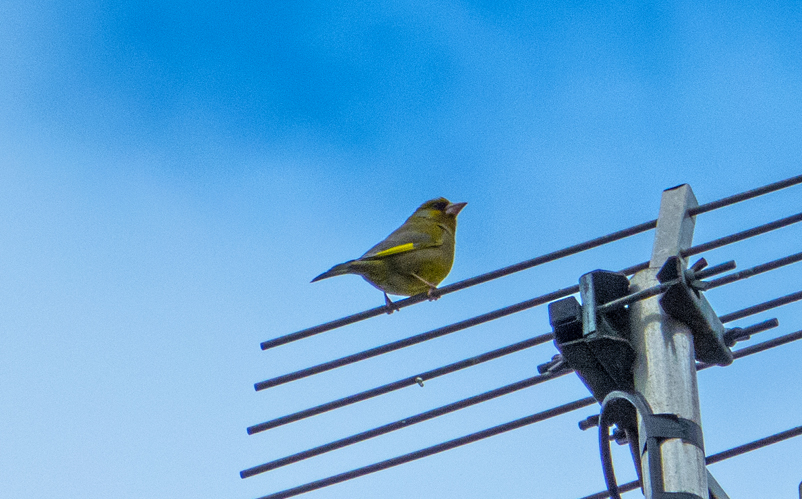
Heading down to Stratford from Colchester courtesy of Abellio Greater Anglia, the clouds over the oil-seed rape fields to the west of Marks Tey had the promise of fair-weather cumulus, and by the fields to the west of Witham they were looking even more promising:
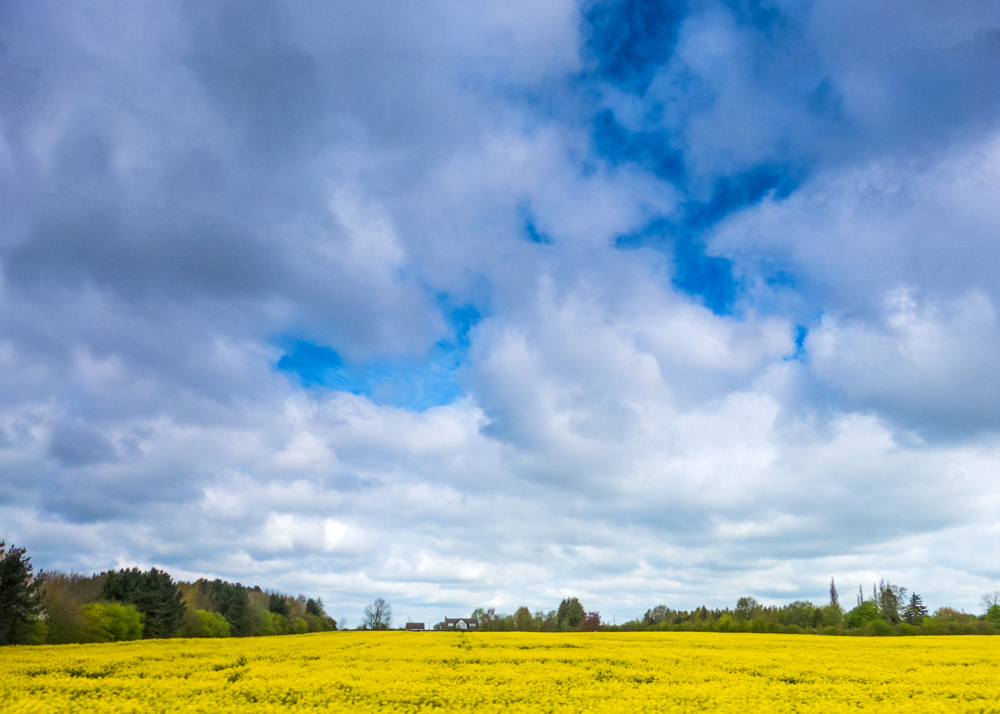
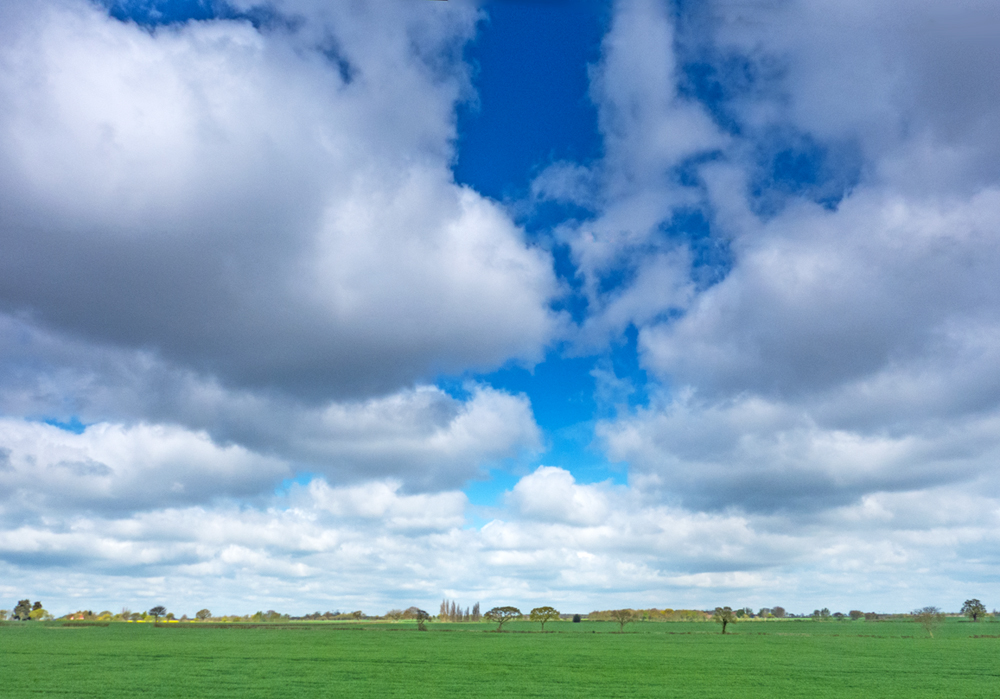
However, a big bank of cumulus congestus approaching the fields just east of Chelmsford, then thickening into fat rows of cumulus mediocris over New Hall School, Chelmsford, suggested that there was a fair amount of energy in the lower atmosphere (and energy often means trouble):
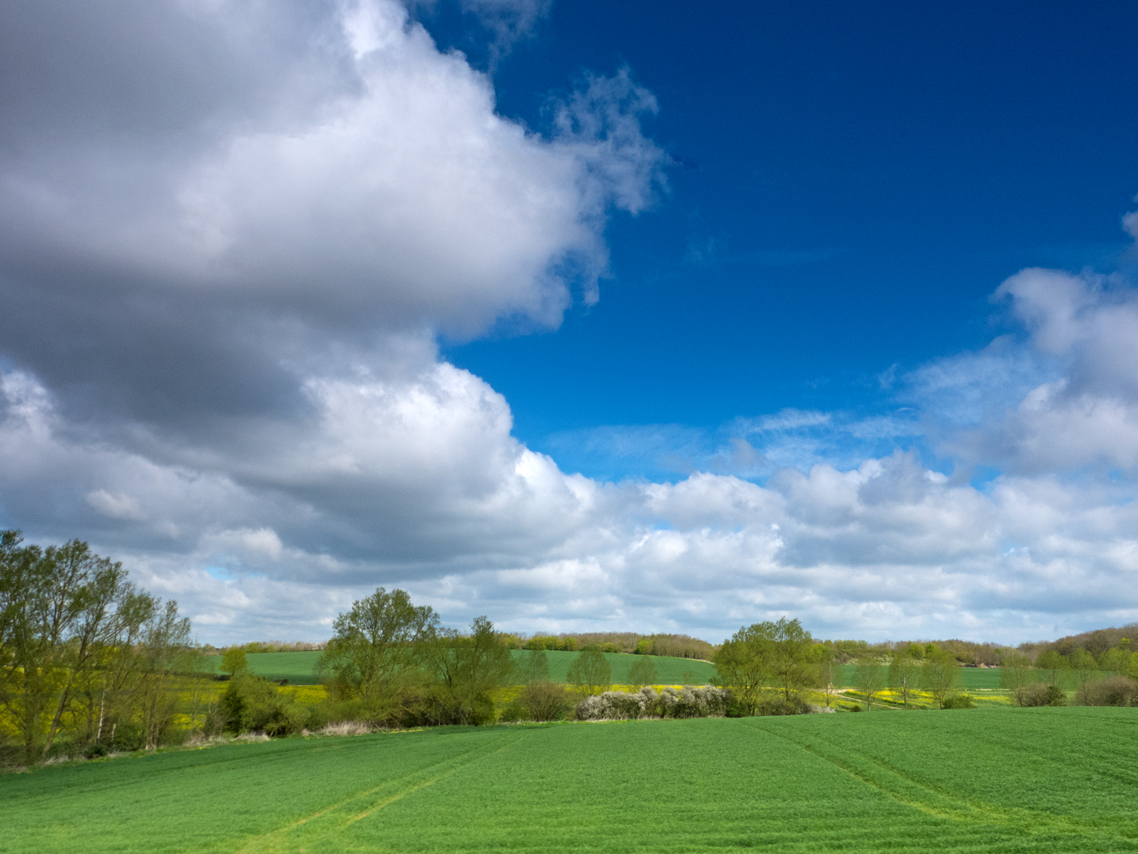
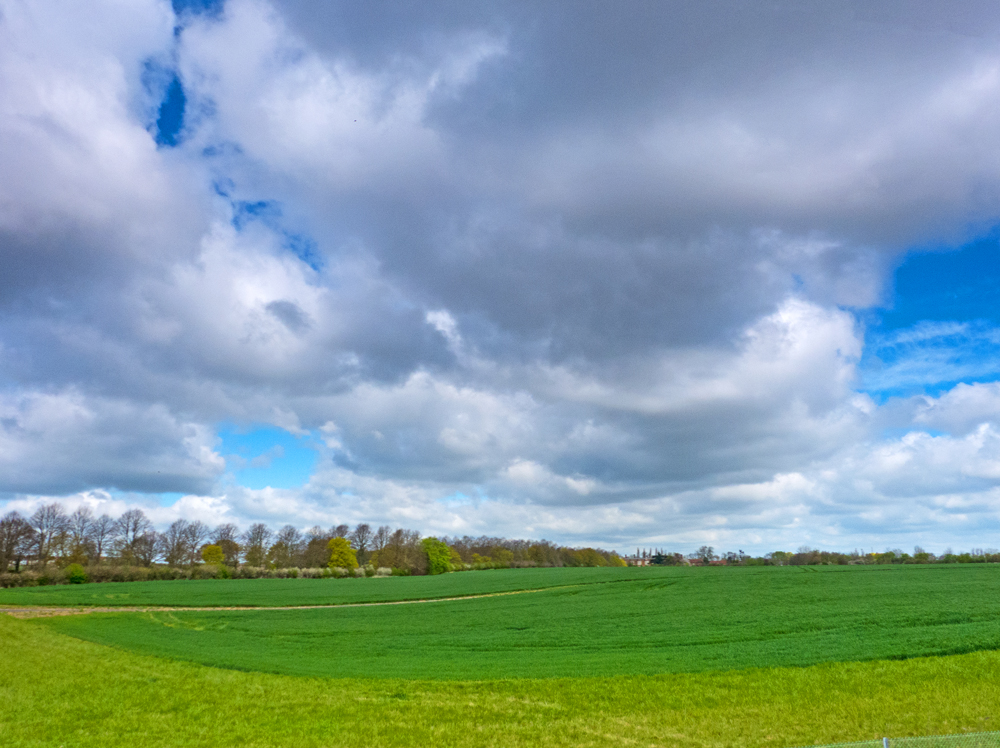
A brief respite and more blue over the poplar fields near Ingatestone hinted at clearing skies:
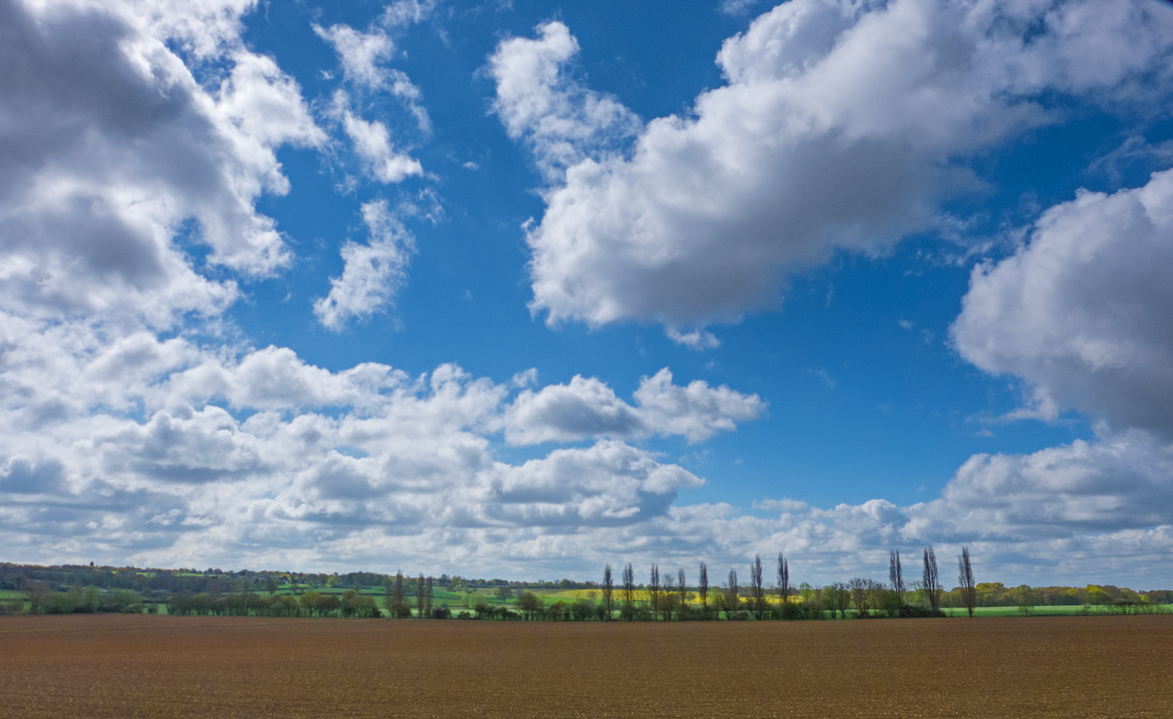
But by the Lone Oak east of Shenfield the cumulus was becoming congested again:
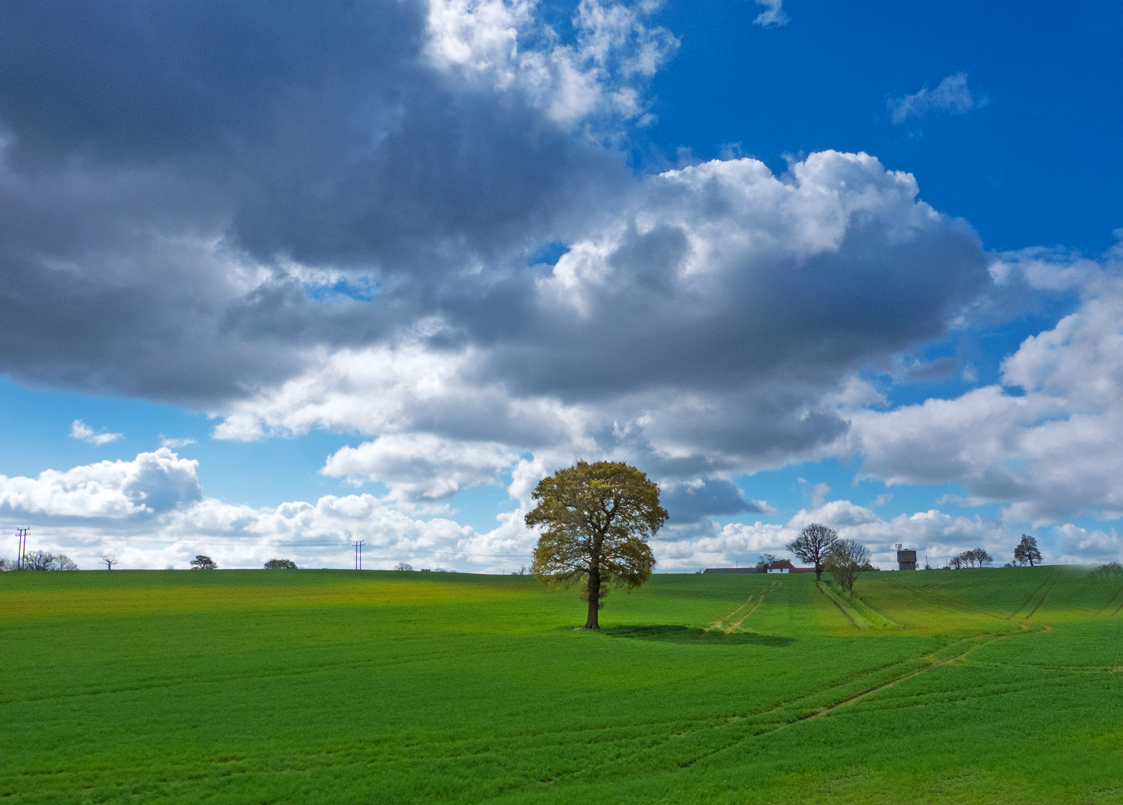
By Stratford, things were starting to become interesting, with signs of cumulonimbus calvus developing (and cumulonimbus is a signal to check for your umbrella):
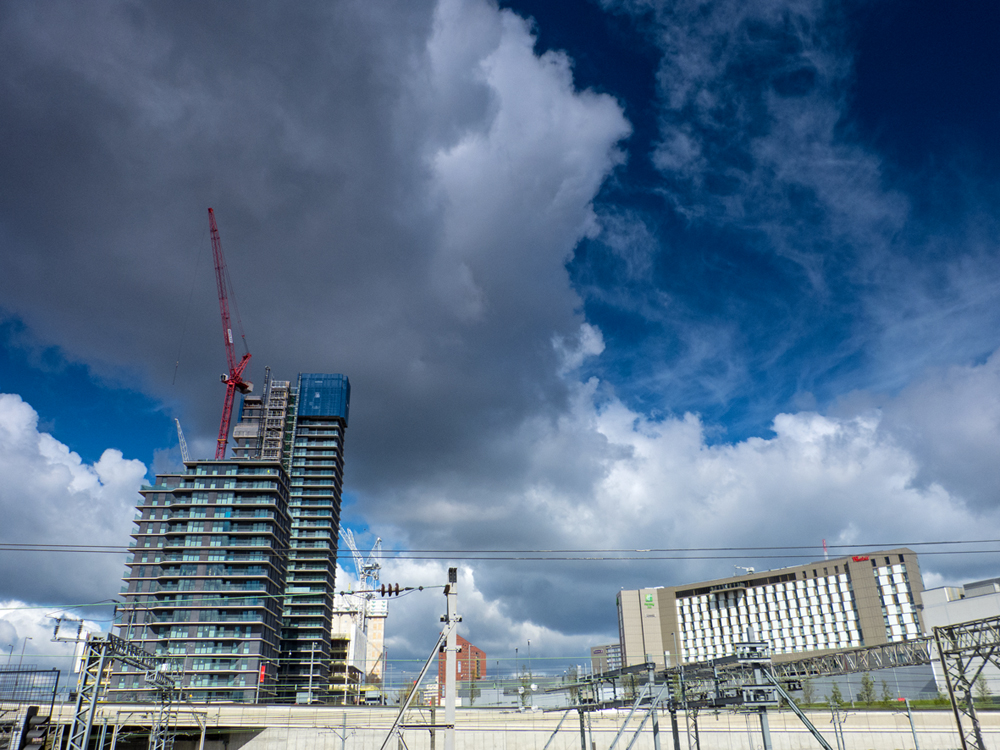
By the time I arrived at Galleon’s Reach DLR station the view westwards to Canary Wharf was becoming decidedly chaotic:
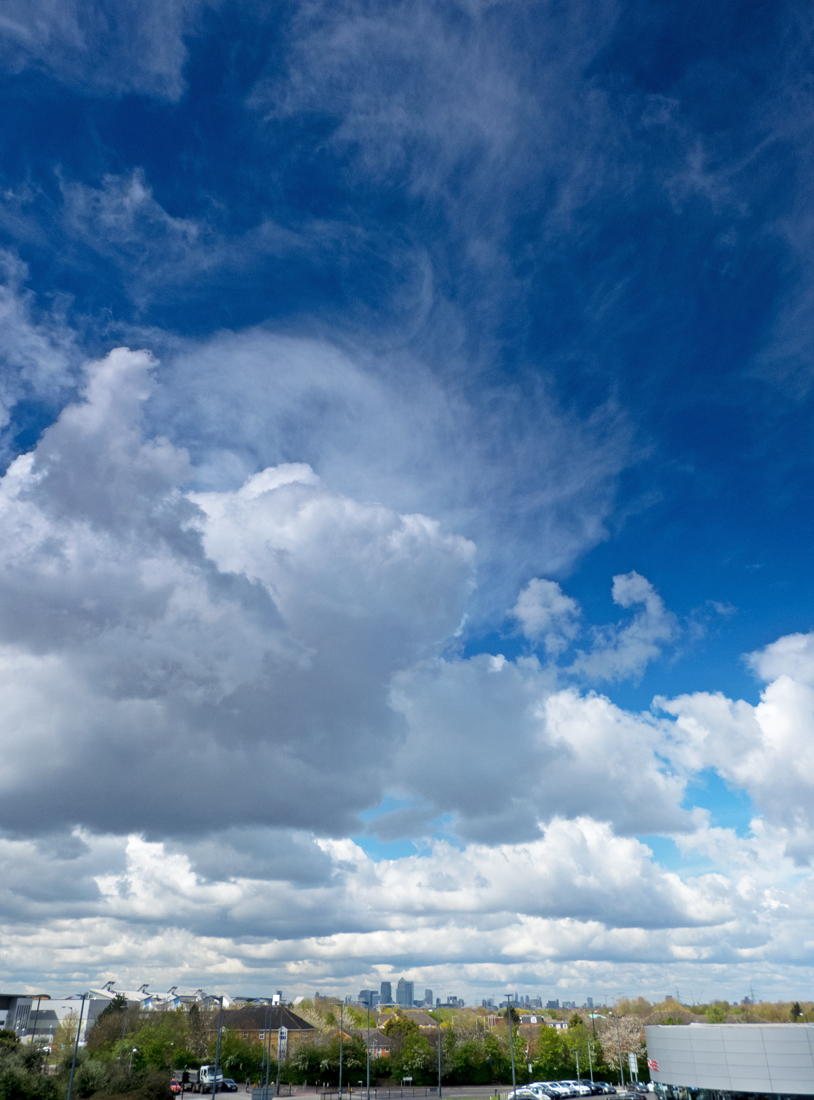
Then it became that classic spring weather – ‘sunshine and showers’, with one particular bank of cumulonimbus capillatus apparently stuck on the western edge of Shooters’ Hill, which sits across the Royal Albert Dock and the Thames from the University of East London Docklands Campus:
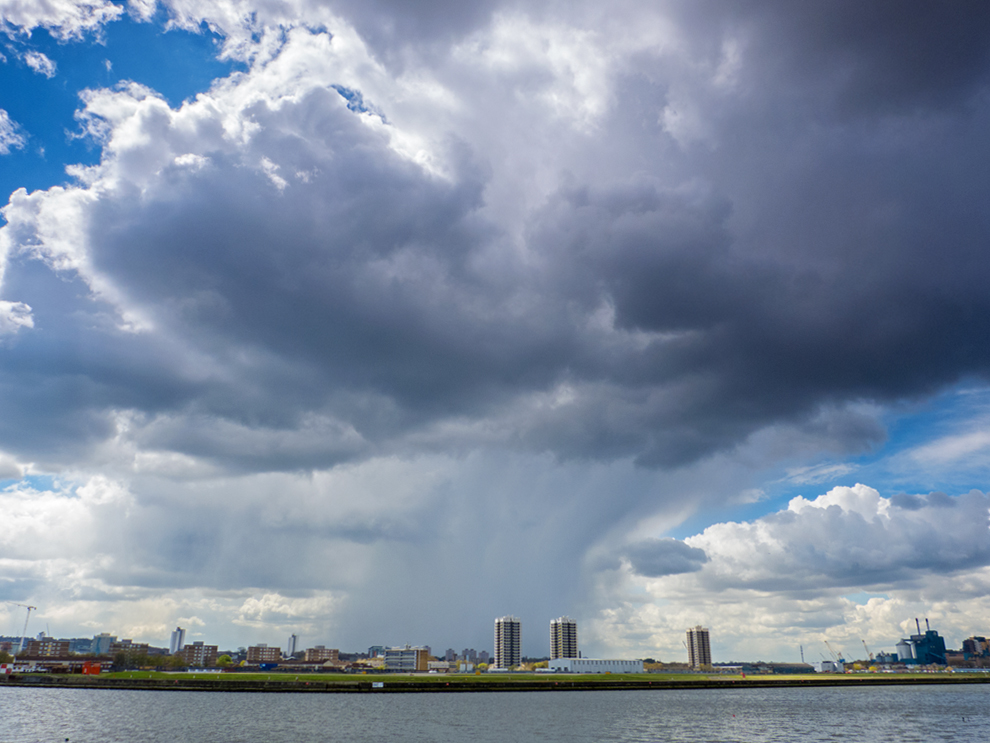
The showers were mostly rain, sleet and hailstones and the towering cumulonimbus capillatus was indeed towering:
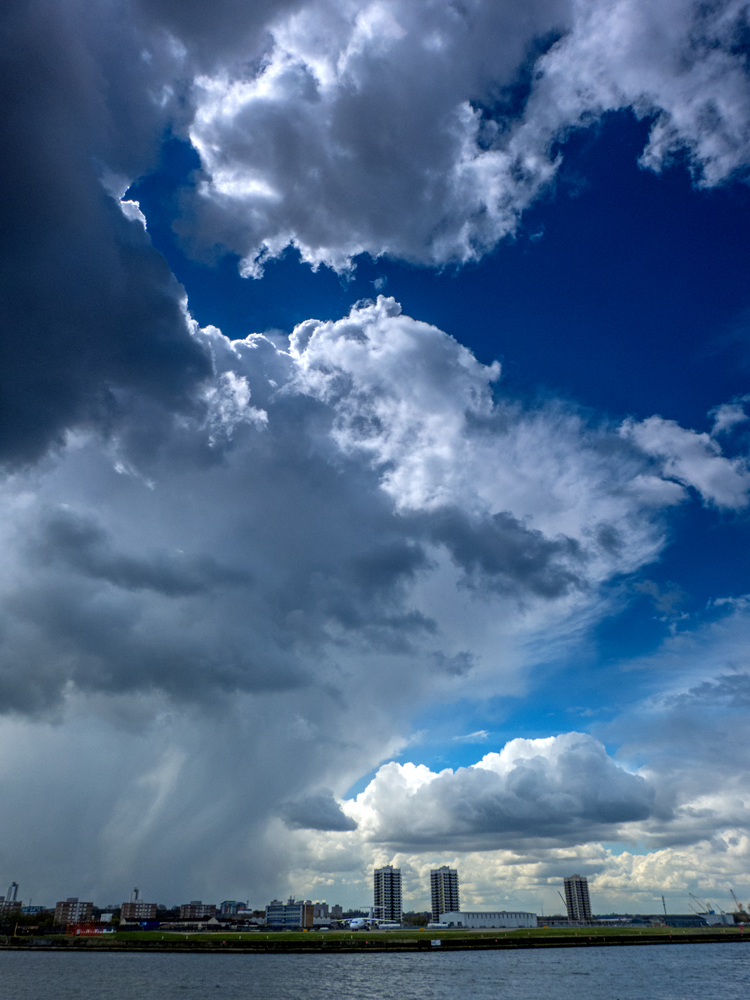
Meanwhile the planes continued to land and take off from London City Airport:
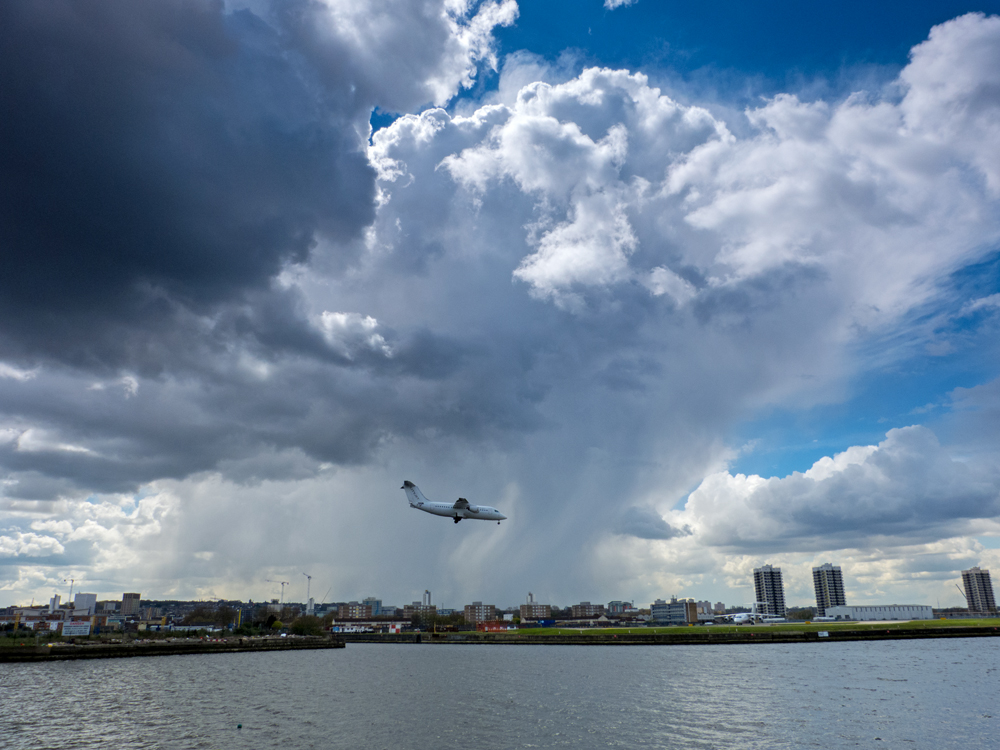
…while above them the planes to Heathrow were heading into the midst of a great bank of cloud drenching Canary Wharf:
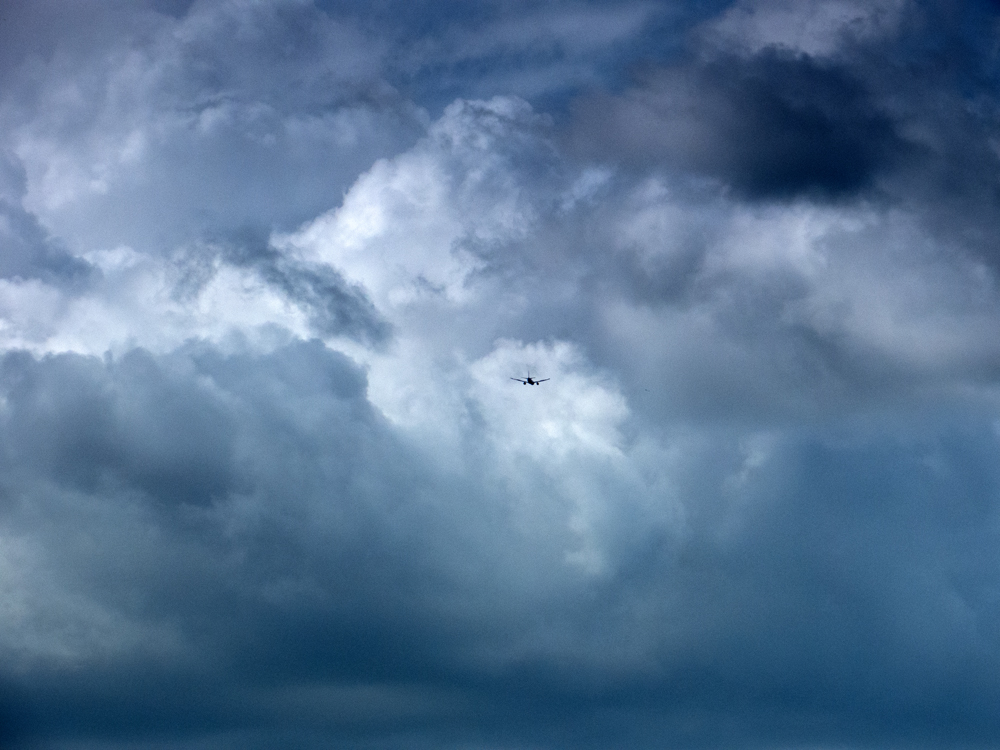
Suddenly it was very dark and it started snowing outside – yes, blizzard snowing – for at least 2 minutes. As the light returned I grabbed my camera to see what had caused winter to return. The view from Galleon’s Reach DLR Station seemed almost apocalyptic:
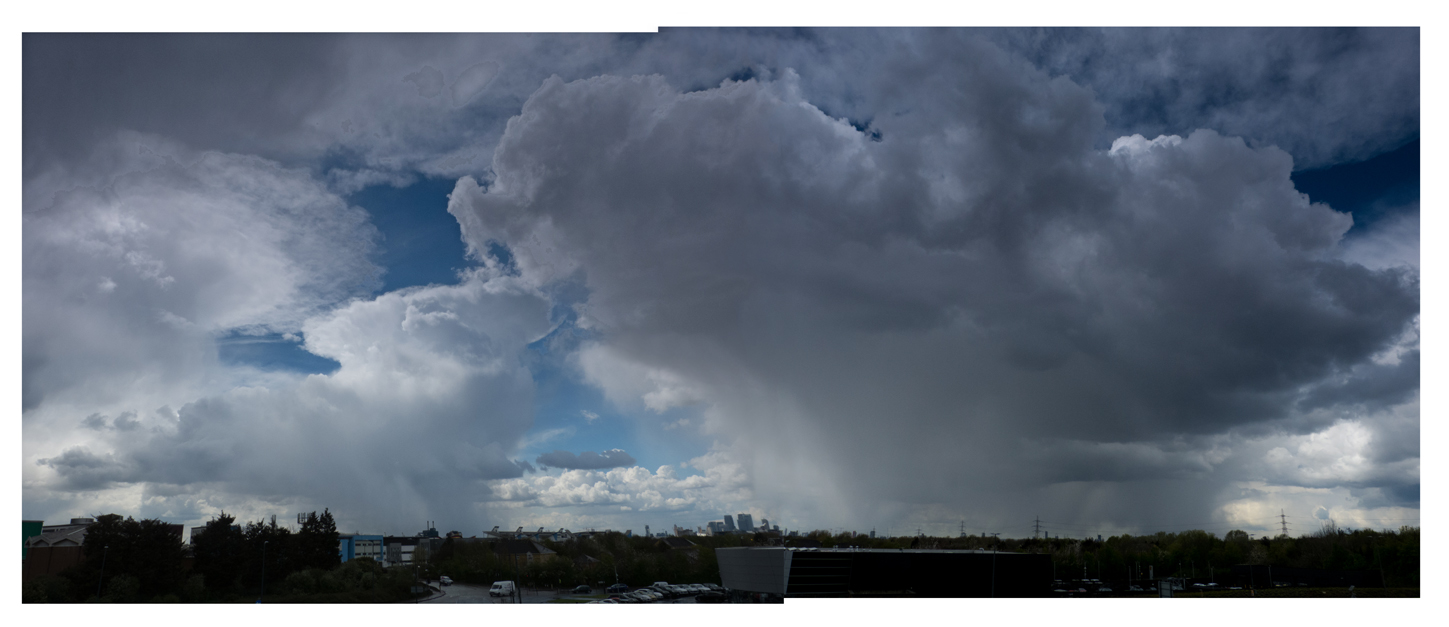
Trotting down to the Thames at Galleon’s Reach an hour or so later at the end of the day, I had another blizzard, but this time of goldfinches, diving in and out of the buddleia and fence netting:
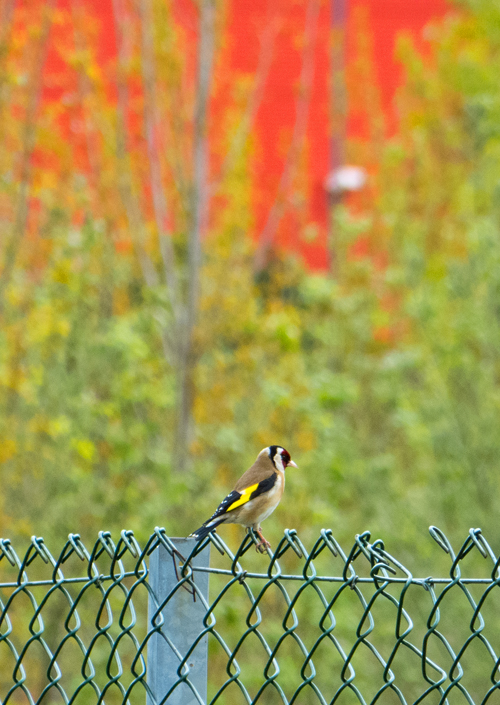
To the north, a huge cumulonimbus capillatus anvil was drifting eastwards towards Barking and Dagenham, and planes heading east from London City Airport were doing their best to avoid it. The view from the plane must have been extraordinary:
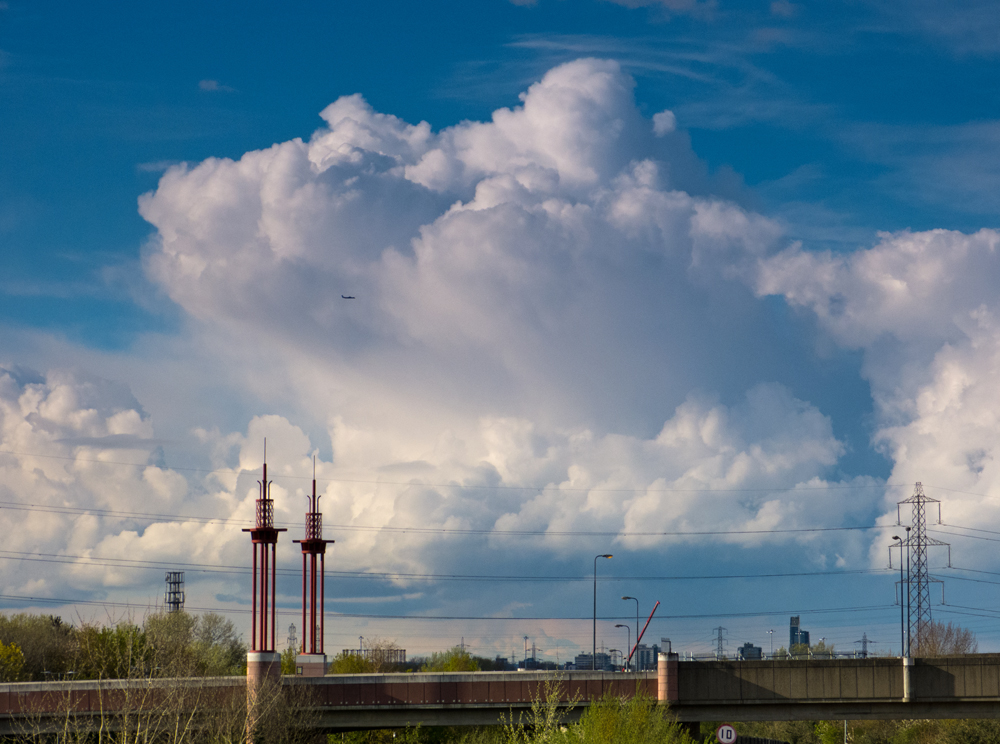
Then a kestrel flew overhead, squealing with indignation because it was being chased by a couple of crows:
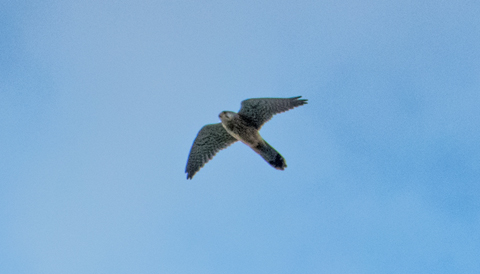
Arriving down at the Thames at Galleon’s Reach, I could see the monster that had turned our day into night and our spring into winter, drifting eastwards towards Dartford:

Planes coming in to land at London City Airport were having to fly round, over, or even in some cases through this monster, and the scenes out of the windows from these planes must have been incredible – or incredibly terrifying:
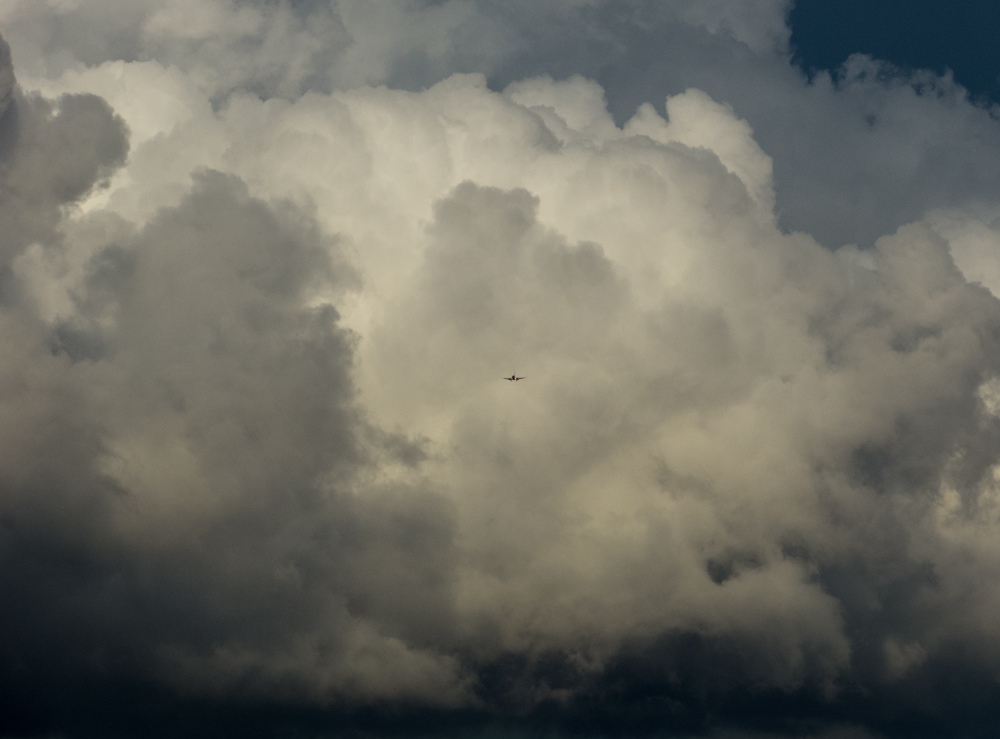
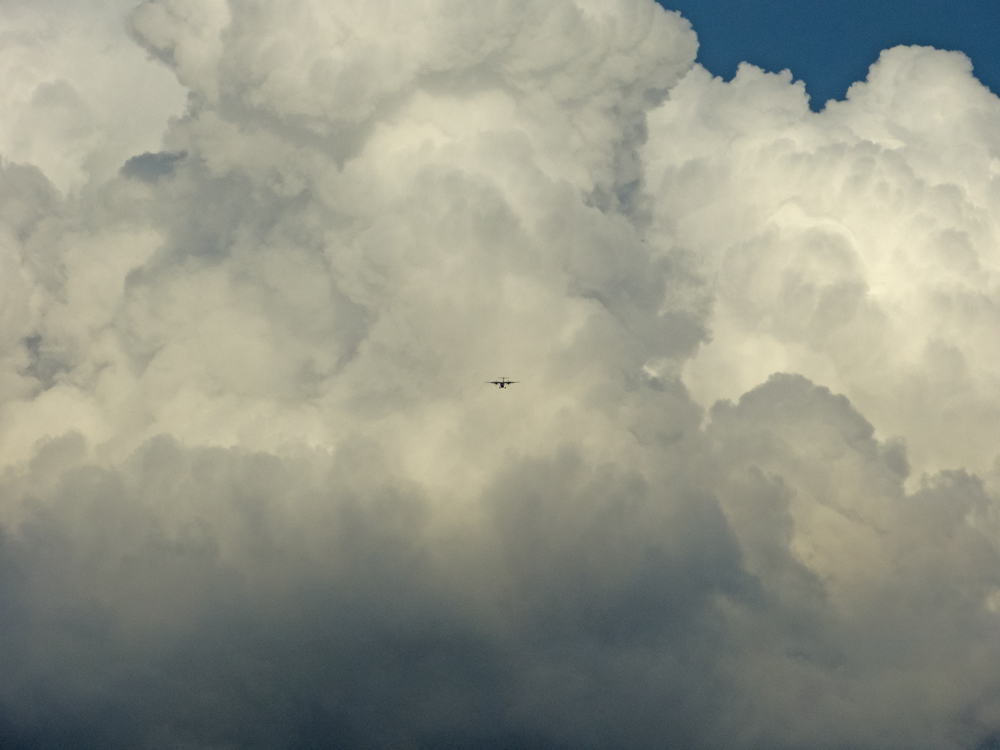
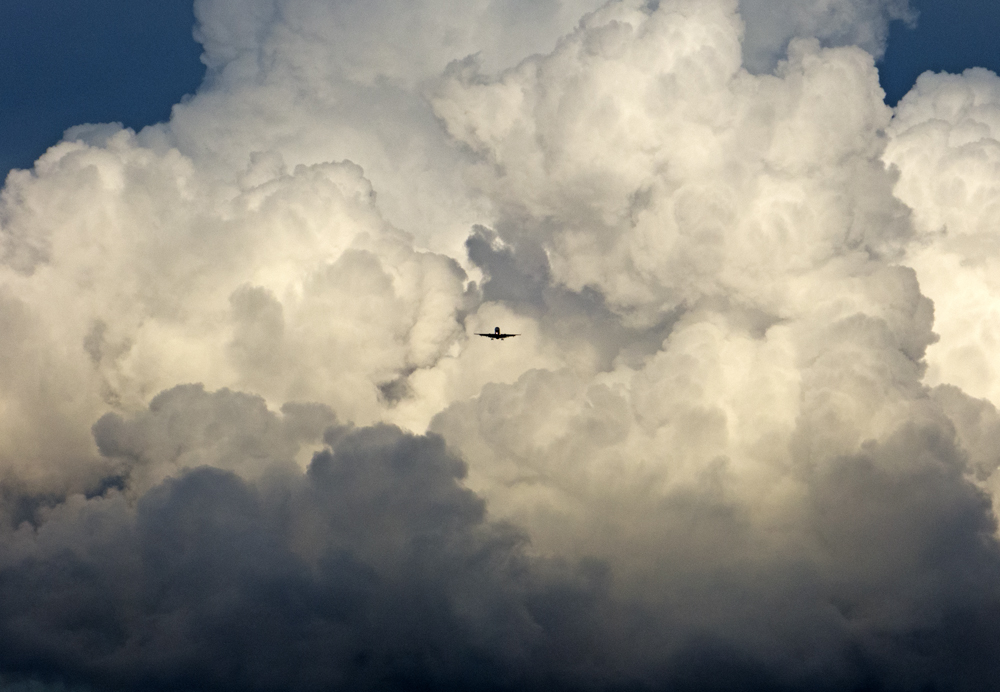
They weren’t the only things coming into land. A shellduck flew past and plonked down onto the Thames in a flurry of wings:
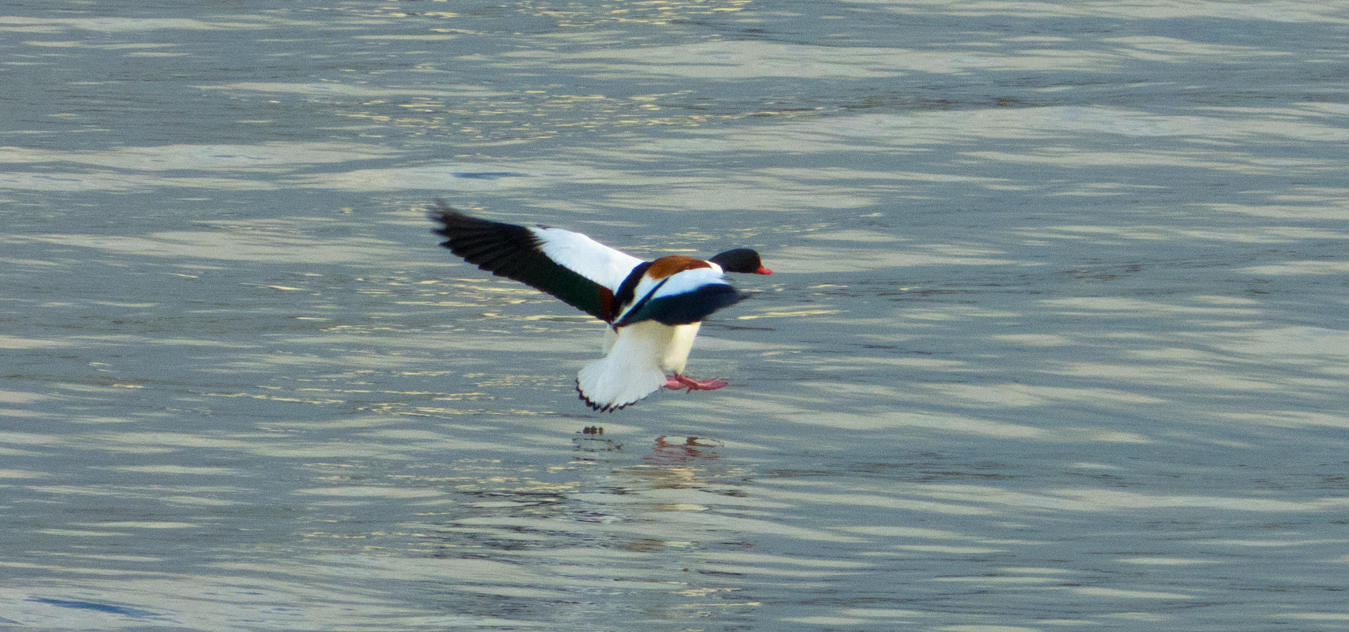
Meanwhile the towers of cumulus and cumulonimbus continued to dump rain, hail, sleet or snow on random parts of the landscape:
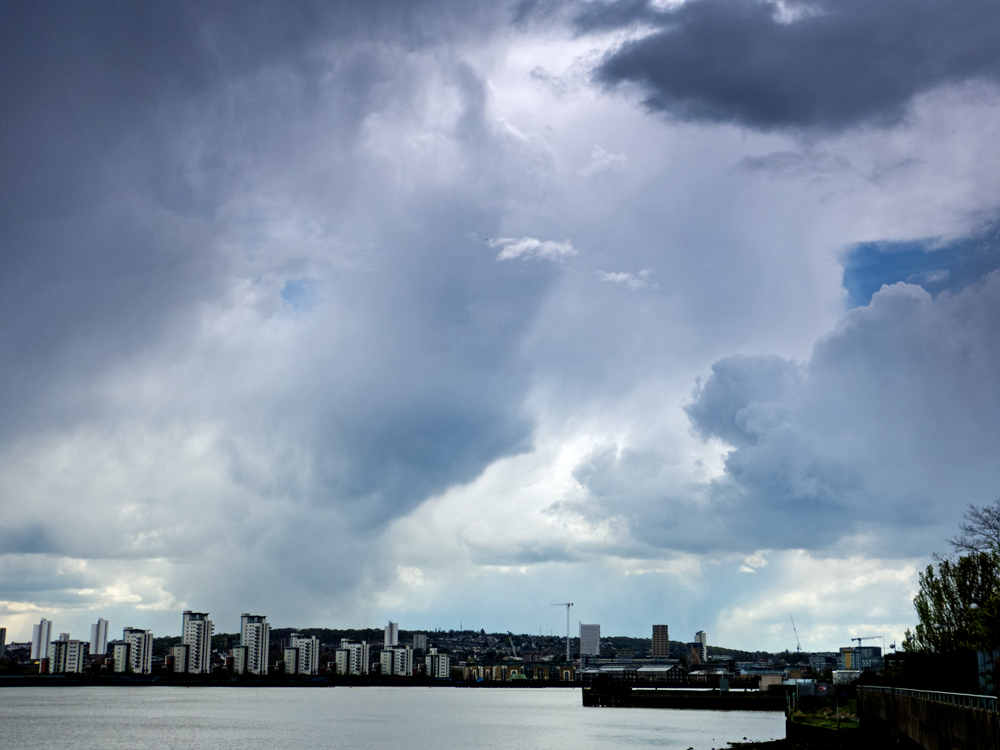
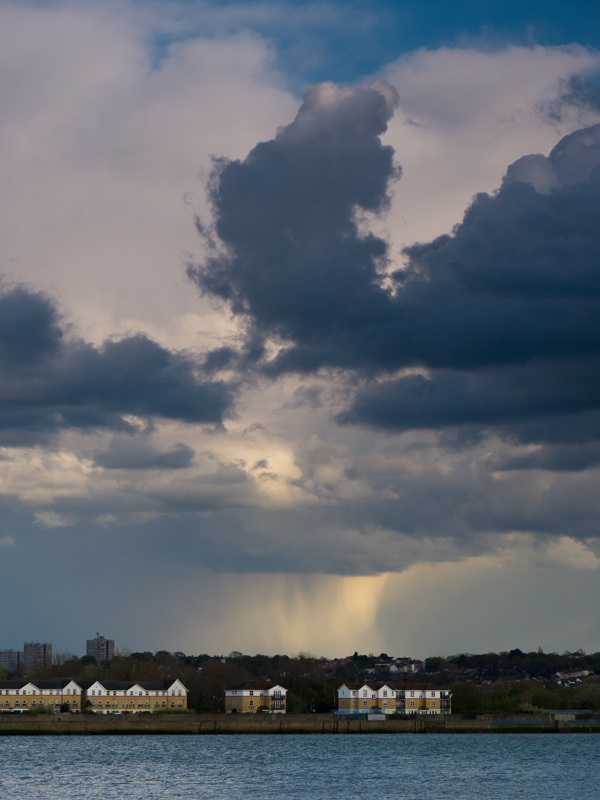
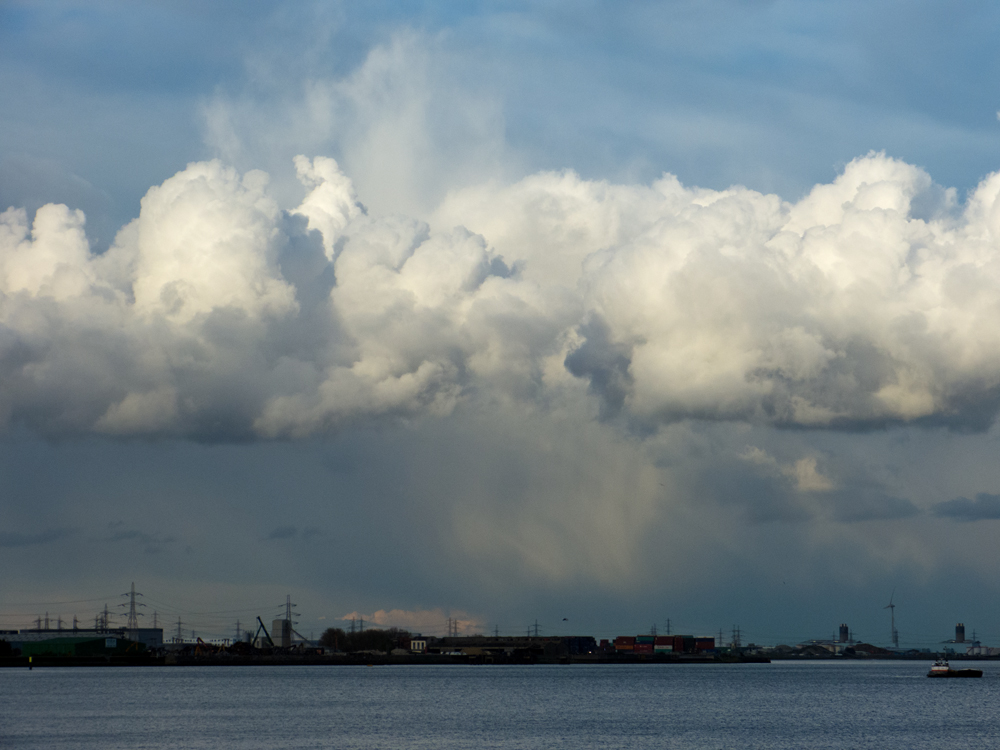
Still the planes struggled into London City Airport through it all:
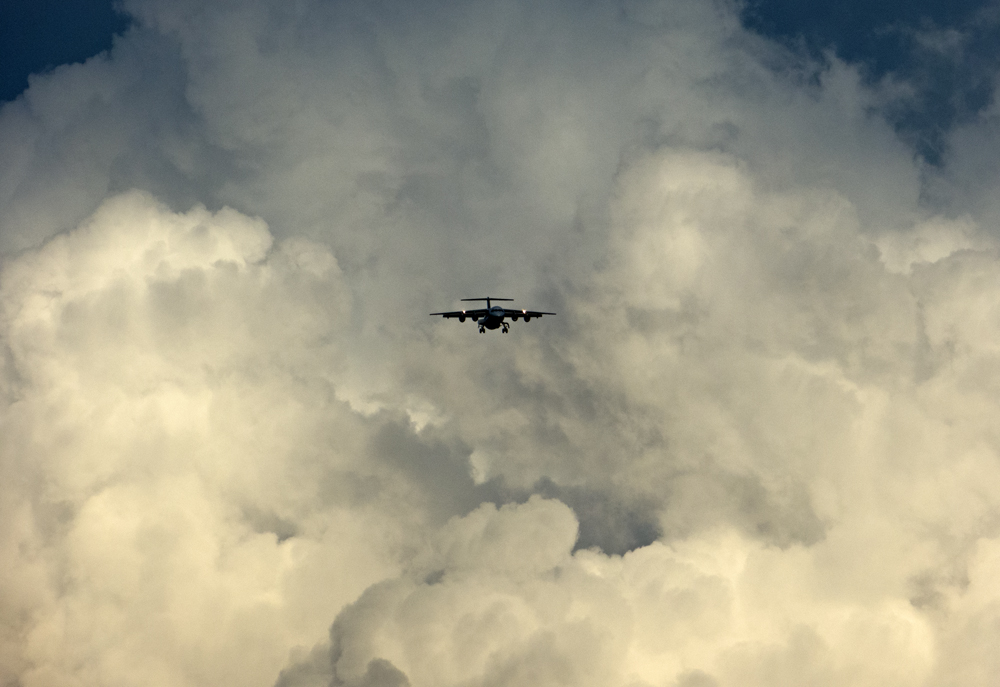
Finally heading to Galleon’s Reach DLR and home, and having put the camera away, an angry altercation between a heron and a crow (they’re a rough lot, the crows of Beckton) above the station had me scrabbling for the camera again:
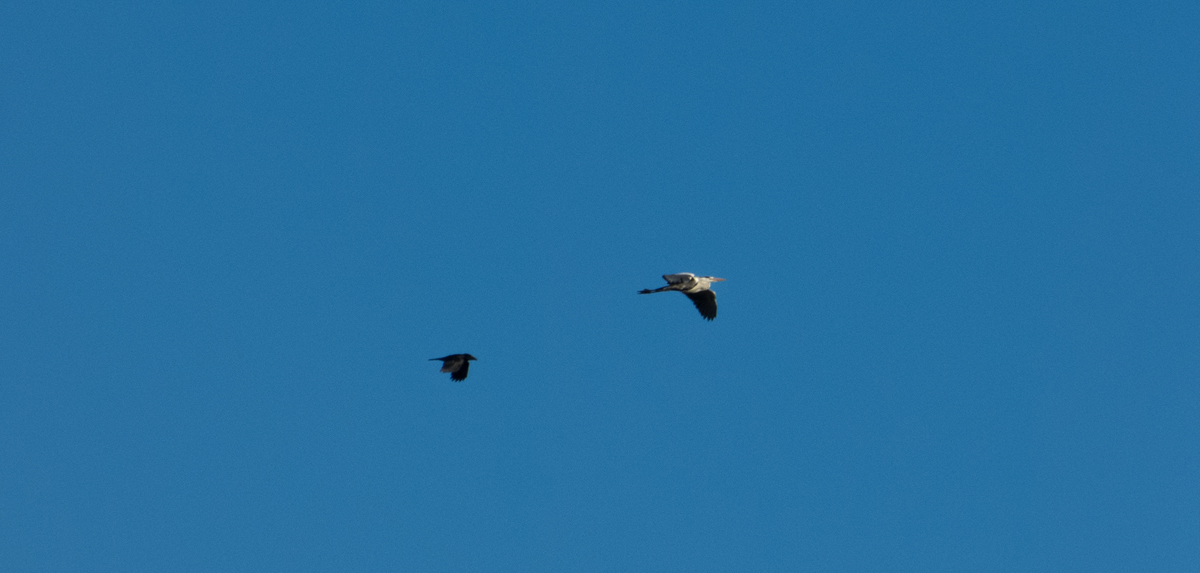
Finally on the train back to Colchester from Stratford, the most enormous cumulonimbus capillatus turned a stunningly beautiful peach colour, lit up by the rays of the setting sun as we emptied passengers out at Chelmsford, but the train then immediately headed straight towards this huge cloud so it was impossible to photograph. All that was visible was the northern margin of it, and my usual tricks with lens shades couldn’t stop the reflections of the carriage lights, so here’s the result (of just a small portion of that beautiful cloud) without all the tricks of the trade:
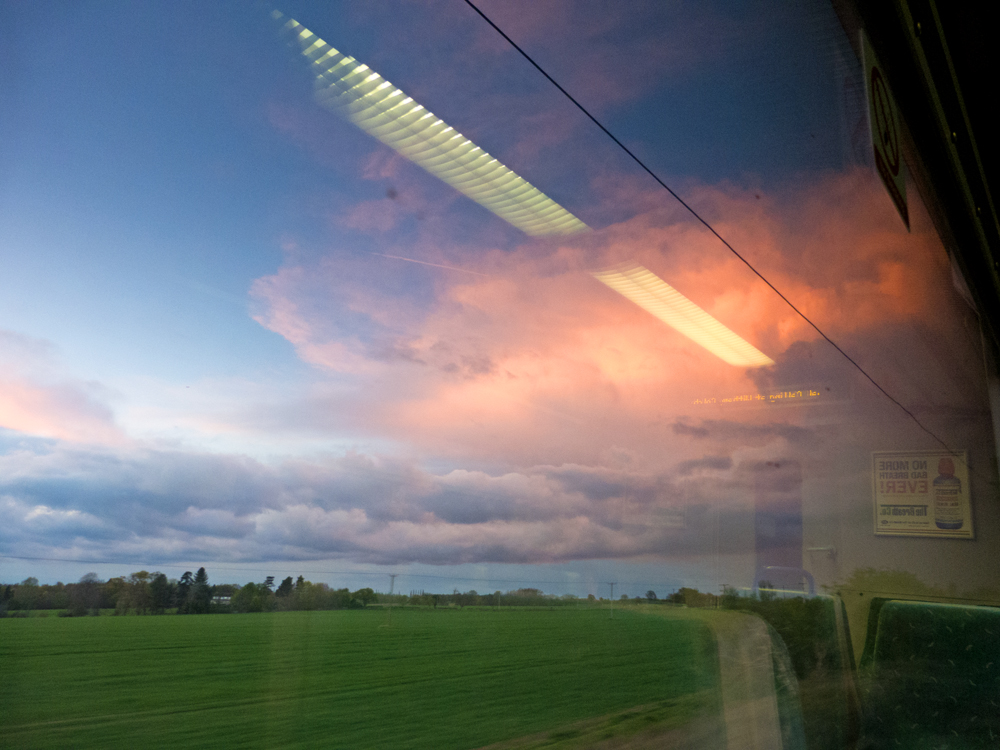
Passing under that cloud and on to Colchester, there was just enough light to catch the sunset over oil-seed rape fields at Marks Tay:

Busy day – plus work!







